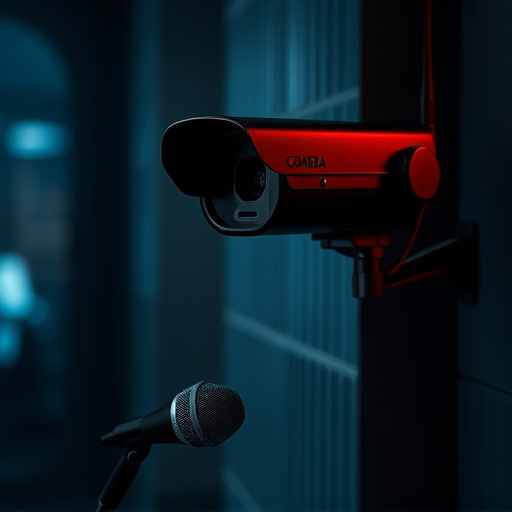Spy cameras and microphones are advanced, discreet surveillance tools used for observation and recording in private settings. With miniature sizes, HD video capture, motion detection, and wireless transmission, spy cameras provide critical data. Microphones offer remote audio recording with noise-canceling technology. Detection methods, including RF detectors, visual inspections, thermal cameras, and audio monitoring, ensure their identification. However, the ethical and legal implications of using these devices require strict regulations to balance legitimate applications with privacy protection.
Uncover the insidious world of hidden microphones—a technology that whispers secrets in the digital age. This article navigates the intricate landscape of spy cameras and microphones, exposing their capabilities and how to detect them. From understanding the technology behind these devices to exploring legal and ethical boundaries, we delve into the art of identifying hidden microphones. Armed with knowledge, readers will learn to protect privacy and navigate this modern-day enigma.
Understanding Spy Cameras and Microphones: Unveiling the Technology
In the realm of covert surveillance, spy cameras and microphones have emerged as powerful tools, enabling discreet observation and recording. These devices are meticulously designed to operate hidden from view, making them ideal for situations where privacy needs to be respected while still gathering essential information. Spy cameras, often miniature in size, can capture high-definition video footage, offering a clear picture even in low-light conditions. They are integrated with advanced sensors and processing capabilities, allowing them to detect motion, record audio, and transmit data wirelessly or through encrypted connections.
Microphones designed for spy equipment are equally impressive. They are capable of picking up audio from considerable distances while minimizing their own presence. These microphones often employ advanced noise-cancelling technology to ensure clear sound quality, even in noisy environments. The ability to remotely control and monitor these devices via smartphone apps or computers provides users with complete discretion and real-time access to the captured data. This blend of cutting-edge technology empowers individuals to navigate various scenarios, from home security to professional investigations, while maintaining a level of covertness that was previously unimaginable.
Identifying and Detecting Hidden Microphones: Tools and Methods
Identifying hidden microphones, often referred to as spy cameras or bugs, has evolved with technological advancements. Professionals rely on a combination of specialized tools and keen observation to detect these clandestine devices. One common method involves using radio frequency (RF) detectors that can pick up signals from active microphones. These devices are particularly useful in areas where electronic interference might mask the microphone’s presence, like industrial or commercial settings.
Visual inspection has also become crucial. Experts look for unusual hardware, small openings, or subtle modifications to everyday objects that could conceal a listening device. Advanced imaging techniques, such as thermal cameras, can highlight temperature discrepancies indicative of hidden components. Additionally, audio monitoring tools designed to analyze sound patterns and frequencies can help identify suspicious signals, further aiding in the detection process.
Legal Implications and Ethical Considerations of Using Hidden Microphones
The use of hidden microphones, or spy cameras and microphones, raises significant legal implications and ethical considerations. In many jurisdictions, the placement and use of such devices are strictly regulated to protect individual privacy rights. Unauthorized surveillance through hidden microphones can constitute a breach of privacy, leading to severe legal consequences, including fines and imprisonment. Moreover, the ethical dimensions involve respecting personal boundaries and consent, as secretly recording conversations or activities without prior knowledge can lead to mistrust, harm relationships, and erode public trust in institutions.
While there are legitimate uses for hidden microphones, such as law enforcement investigations under controlled conditions, the potential for abuse is real. Misuse of these devices can result in serious privacy invasions, with recorded information potentially falling into the wrong hands. Therefore, clear guidelines, oversight mechanisms, and transparency are essential to ensure that any use of spy cameras and microphones adheres to legal standards and ethical principles, striking a delicate balance between security needs and individual freedoms.
